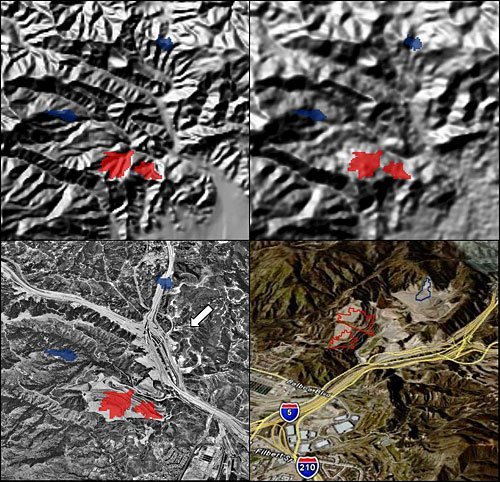Author Archives: sclcacadmin
Significant Topographic Changes at Sunshine Canyon Landfill
https://topochange.cr.usgs.gov/
Topographic change due to landfill operations has been observed based on some of the features delineated by the elevation differencing and thresholding process. The resulting altered landforms from landfills differ from other anthropogenic activities in that much of the deposited material is not rock and soil that had been previously excavated but man-made material that has been transported to the deposition site.
The figure below shows the Sunshine Canyon landfill in Sylmar, California, an example of topographic change due to landfill operations. The operation and expansion of this landfill continues to be a controversial topic in the local area. The close proximity of the landfill site to a major transportation artery is a reminder that visual impacts of human geomorphic activities can be significant.

Sunshine Canyon Landfill Local Enforcement Agency (SCL-LEA) Meeting – December 5, 2013
Sunshine Canyon Landfill Joint City/County Technical Advisory Committee Meeting
SCAQMD Complaints by Year and Month (Through October 2013)
Solid Waste Integrated Resources Plan (SWIRP) Meeting
We look forward to your participation during this public review period, and hope you join us at one of the scheduled meetings.
https://scl-cac.org/wp-content/uploads/2013/11/SWIRP-NOC-NOA-102513_final_updated_11.5.13.pdf
No dumping: State’s largest active landfill closing on Thursday

Puente Hills Landfill, the largest active landfill in the country, will close its doors. The permit for the site, which is near capacity, will expire after the close of business on Thursday.
“The landfill has been a solid, solid waste management facility since the 1950s,” said Chuck Boehmke, head of the solid waste management department for the Sanitation Districts of Los Angeles County. “It’s done a big part in keeping solid waste costs down.”
At its peak, the landfill Continue reading
Conversion Technology Six-Month Status Update
Click here for the Six-Month Status Update (April 2013 to October 2013) from the Department of Public Works to the County of Los Angeles Board of Supervisors on the advancement of conversion technology development in Los Angeles County.
If you have questions, please contact Ms. Tranette Sanders at (626) 458-3562 or tsanders@dpw.lacounty.gov.
Report on Recent Actions Taken by the Sunshine Canyon Landfill LEA Board of Directors
PUBLIC NOTICE – Approval of Sunshine Canyon Landfill Cell CC-3B Design Report
THIS IS NOTICE that the Executive Officer intends to approve, as set forth in the attached draft letter, a liner design report (Report) for Cell CC-3B at the Landfill that was submitted to the Regional Board on July 9, 2013. Comments on this matter must be in writing, addressed to Dr. Wen Yang, Chief of the Land Disposal Unit, and received at the Regional Board Office by the close of business on August 19, 2013.
The Report provides the design and construction infmmation of an approximate 20-acre area within the permitted footprint of the Landfill, including design review, liner and leachate collection systems, geological conditions, slope stability, and surface water management.
Wayde Hunter
GHNNC Board Member / Vice Chair SCL-CAC
